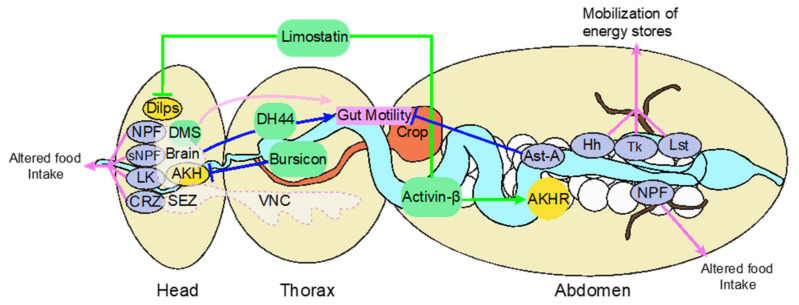Figure 2.
The fly gut is a major organ involved in nutrient-sensing to maintain metabolic homeostasis. The gut secretes multiple hormones and receives information from brain-derived hormones. These signals regulate functions, including gut motility, mobilization, and food intake. Thus, these hormones regulate the nutrients availability. Brain-derived peptides including Crz, DMS, Lk, NPF, sNPF regulate food intake, thereby regulating the quantity of nutrients reaching the GI tract. The gut hormones such as Hh, Tk, Ast-A, Lst, and NPF regulate the amount of food intake, mobilization of energy stores, and gut motility. Bursicon-α derived from EE cells promotes energy storage by inhibiting the production of glucagon-like hormone AKH. Limostatin, secreted by the gut endocrine cell and corpus cardiacum under nutrient-scarce conditions, controls the feeding behavior by suppressing DILP and causes mobilization of the energy via secretion of gut-derived activin-β. VNC is the ventral nerve cord.

